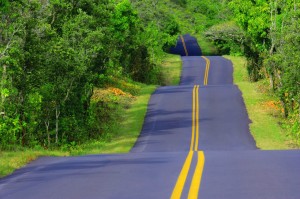 Wednesdays, hump days, are hill work-outs. I wonder if that’s why Bart Yasso put hills on Wednesdays, to help us get over the proverbial hump. Or, at least that’s the work-out on the fall marathon training schedule he put together that myself and probably hundreds of other runners are following. I will definitely be coming back to the marathon training topic but for now I want to focus on hills.
Wednesdays, hump days, are hill work-outs. I wonder if that’s why Bart Yasso put hills on Wednesdays, to help us get over the proverbial hump. Or, at least that’s the work-out on the fall marathon training schedule he put together that myself and probably hundreds of other runners are following. I will definitely be coming back to the marathon training topic but for now I want to focus on hills.
Just like with intervals, I believe I have a love/hate relationship with these work-outs and I’m sure I’m not alone. On today’s hills (which happens to be a Thursday…sometimes you have to tweak the schedule to fit this thing called life!) I spent some time debating whether I would choose intervals or hills as my preferred torture work-out. Halfway through the work-out I thought I was leaning toward intervals, but by the time I finished and was thinking “it wasn’t that bad” I guess I could pick hills. Of course, I have that same thought at the end of intervals too; I guess it’s all mental! What about you; do you prefer hills or intervals?
Getting Over the Hump
Bart’s schedule doesn’t start out lightly. In the 16-week plan the first eight are hills and they start at 6 miles. We spend four weeks at 6 miles, then move up to 7, then 8, then back down to 7, and week eight has 8 miles of hill repeats.
My running routes are not in the flattest part of the world but steady hills are also somewhat tricky to come by. In order to do the six mile route I mapped a loop just over two miles in my neighborhood that starts out flat for about a half mile for a warm-up and then goes straight into four uphill climbs, has another half mile flat, and then two more hill climbs before starting all over. To do the six miles I obviously repeat this loop three times.
I find that I really need the entire first loop to get my body and legs warmed up. I can feel the tightness in my quads and hamstrings on the first set of hills but by the first real recovery they usually loosen up. I try to keep a steady pace on the flats that isn’t too fast because I know I always push harder and run faster up the hills. I also try not to fly down the downhills, and somehow on my route there are really only two and a half downhills. A Runner’s World article shared that when running downhill it’s best to use your arms for balance and rather than pump them or let them flap around, keeping them steady by your sides will conserve energy for when you really do need to pump them to get up the hill.
Whether going up or down hill I try to focus on keeping my form consistent. I try not to lean too far forward or too far back and keep my footfalls relatively just under my body. I also try to keep my breathing consistent. I don’t want to be panting the entire way uphill otherwise I spend more time trying to catch my breath on recovery rather than just let my body relax a little before the next hill. All this is easier said than done but if you’re thinking about these things then you’re less likely to focus on how steep or long the hill is that you’re about to climb.
The first time I ran the hills I noticed that my hip flexors were a little sore in addition to the tightness I felt in my hamstrings. I remembered reading many times during my research on ITBS that these muscles take a beating on hills and should be strengthened and stretched well so that they can support the extra work required to run hills. To strengthen my hips I’ve added hip raises to my work-outs and do 100 hip raises twice a week. It’s not a ton but it’s better than nothing. Because I am also triathlon training I think the cycling and swimming help strengthen these muscles as well as give them a break from how they’re used in running.
I have also added the foam roller back into every stretching routine. After any work-out I spend time doing abs and core strengthening as well as stretching and I make sure to roll each leg in the quad and hamstring area 5-10 or 15 times depending on how I feel. I only needed to experience ITBS once to know that it’s worth taking preventive measures to prevent.
As daunting as I find the hill work-outs on the training schedule, the fact that I had to walk up the hill in the half marathon I did this summer still bothers me. I don’t want to have to do that again and if it takes running hills on every hump day (or Thursday or whatever day happens to fit my life schedule best that week) then I’m willing to do it.
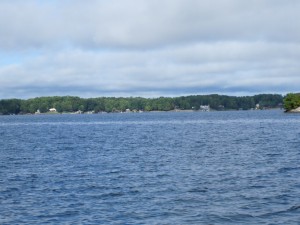

 At the
At the 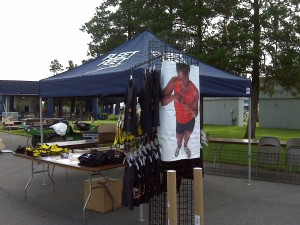
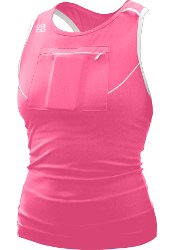 I have been a huge fan of
I have been a huge fan of 
 Wednesdays, hump days, are hill work-outs. I wonder if that’s why
Wednesdays, hump days, are hill work-outs. I wonder if that’s why 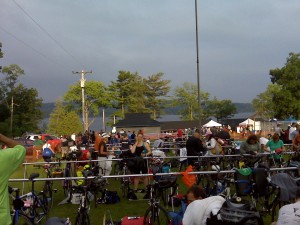
 There are a number of training drills that call for running at 5K pace or a 10K pace. Some drills just tell you to run at your goal race pace. Though I’ve gotten into incorporating more tempo runs and speedwork into my training I still haven’t quite figured out the paces I should be shooting for in those runs. The most I’ve taken the time to figure out is my goal time for different distances. If I took the time (and was good at math) I’m sure I could quickly figure out those different paces and times that I should be using in training.
There are a number of training drills that call for running at 5K pace or a 10K pace. Some drills just tell you to run at your goal race pace. Though I’ve gotten into incorporating more tempo runs and speedwork into my training I still haven’t quite figured out the paces I should be shooting for in those runs. The most I’ve taken the time to figure out is my goal time for different distances. If I took the time (and was good at math) I’m sure I could quickly figure out those different paces and times that I should be using in training.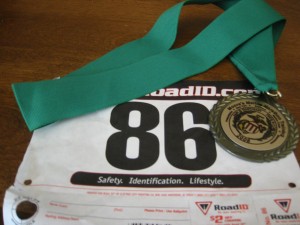 Earlier this year I met the owner of
Earlier this year I met the owner of